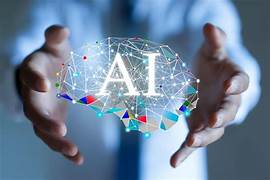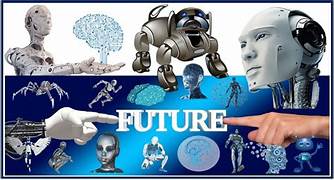What is Artificial Intelligence? Applications, Pillars of AI, Future of AI in 500 words

Artificial Intelligence: A Comprehensive Overview
Artificial intelligence (AI) has emerged as a transformative force, revolutionizing industries and shaping the very fabric of human existence. Its impact is pervasive, influencing everything from the way we interact with technology to the way we conduct business and even make decisions. But what exactly is AI, and how does it work?

Demystifying Artificial Intelligence
In its simplest form, AI refers to the ability of machines to simulate human intelligence. This encompasses a broad spectrum of capabilities, including learning, reasoning, problem-solving, and perception. AI systems can analyze vast amounts of data, identify patterns, and make predictions with remarkable accuracy.
The Pillars of AI
The development of AI is underpinned by several key technologies, including:
- Machine Learning: This involves training algorithms to learn from data, enabling them to improve their performance over time without explicit programming.
- Deep Learning: A subset of machine learning, deep learning utilizes artificial neural networks, which are inspired by the structure and function of the human brain, to process and analyze complex data.
- Natural Language Processing (NLP): This field enables machines to understand, interpret, and generate human language.
- Computer Vision: This technology empowers machines to extract meaningful information from images and videos.
Applications of AI

The applications of AI are expanding rapidly, permeating various aspects of our lives. AI is revolutionizing industries such as:
- Healthcare: AI is being used to develop diagnostic tools, analyze medical images, and personalize treatment plans.
- Finance: AI is used for fraud detection, risk assessment, and algorithmic trading.
- Transportation: AI powers self-driving cars, traffic optimization systems, and autonomous delivery drones.
- Manufacturing: AI is employed in predictive maintenance, supply chain optimization, and robotic automation.
- Retail: AI is used for personalized product recommendations, customer service chatbots, and dynamic pricing.
- Education: AI-powered tutoring systems, adaptive learning platforms, and automated grading tools are transforming education.
The Future of AI
AI is rapidly evolving, with advancements in algorithms, computing power, and data availability driving its progress. As AI continues to mature, we can expect to see even more transformative applications emerge, shaping the future of work, healthcare, education, and society as a whole.
Ethical Considerations
The rapid development of AI raises important ethical concerns, including:
- Bias and Fairness: AI systems can perpetuate and amplify existing biases in data, leading to discriminatory outcomes.
- Transparency and Explainability: The decision-making processes of AI systems can be opaque, making it difficult to understand and challenge their outputs.
- Job Displacement: AI automation has the potential to displace workers in certain industries, raising concerns about unemployment and economic inequality.
Addressing these ethical challenges is crucial to ensuring that AI is developed and deployed responsibly and equitably.
Conclusion of What is Artificial Intelligence? Applications, Future of AI in 300 words
AI has emerged as a powerful tool with the potential to transform our world. As we continue to explore its capabilities, it is essential to approach AI with caution, ensuring that it aligns with human values and ethical principles. By harnessing the power of AI responsibly, we can create a future that benefits all of humanity.
What is Artificial Intelligence? Applications, Pillars of AI, Future of AI in 500 words
Artificial intelligence (AI) has emerged as a transformative force, shaping the contours of our world in myriad ways. From self-driving cars to personalized medicine, AI is revolutionizing industries and redefining the boundaries of human capabilities.
Demystifying AI: A Glimpse into Its Essence
AI encompasses a broad spectrum of technologies that enable machines to simulate human intelligence. It encompasses tasks that typically require cognitive functions such as learning, reasoning, and problem-solving.
The Pillars of AI: Unveiling Its Underlying Techniques
Several techniques underpin the development of AI systems, each contributing to its ability to mimic human intelligence. These techniques include:
- Machine Learning: Machine learning algorithms enable AI systems to learn and improve from data, identifying patterns and making predictions without explicit programming.
- Deep Learning: Deep learning, a subset of machine learning, utilizes artificial neural networks inspired by the structure of the human brain to tackle complex tasks such as image recognition and natural language processing.
- Natural Language Processing (NLP): NLP empowers AI systems to understand and generate human language, enabling interactions between humans and machines.
- Computer Vision: Computer vision algorithms enable AI systems to interpret and analyze visual information, such as images and videos.
AI’s Realm of Influence: A Panoramic View of Its Applications
AI’s impact permeates various industries, transforming processes and unlocking new possibilities:
- Healthcare: AI is revolutionizing healthcare by assisting in diagnosis, treatment planning, and drug discovery.
- Finance: AI is employed in fraud detection, risk assessment, and algorithmic trading.
- Transportation: AI is driving the development of self-driving cars, optimizing traffic flow, and enhancing logistics.
- Manufacturing: AI is optimizing production processes, predictive maintenance, and quality control in manufacturing.
- Retail: AI is personalizing customer experiences, optimizing product placement, and enhancing supply chain management in the retail sector.
The Ethical Landscape of AI: Navigating the Moral Maze
As AI reshapes our world, ethical considerations arise, demanding careful consideration:
- Privacy: AI systems that collect and analyze vast amounts of data must adhere to strict privacy regulations to protect individuals’ rights.
- Bias: AI systems may perpetuate biases present in the data they are trained on, leading to discriminatory outcomes.
- Transparency: The decision-making processes of AI systems must be transparent to allow for scrutiny and accountability.
- Job Displacement: AI automation may displace certain jobs, necessitating measures to retrain and upskill workers.
The Future of AI: A Glimpse into the Horizon
The future of AI holds immense potential, promising to revolutionize industries and shape our lives in unprecedented ways. AI will likely play a pivotal role in:
- Scientific Discovery: AI will assist in scientific research, accelerating breakthroughs in fields like medicine, materials science, and space exploration.
- Human-AI Collaboration: Humans and AI will collaborate seamlessly, augmenting each other’s capabilities and tackling complex problems.
- AI for Social Good: AI will be harnessed to address global challenges such as climate change, poverty, and disease.
Conclusion: Embracing AI Responsibly
AI stands at the precipice of a new era, poised to transform our world in ways we can only begin to imagine. As we embrace AI’s transformative power, it is crucial to navigate its ethical implications responsibly, ensuring that AI serves as a force for good, empowering humanity to thrive in a world of boundless possibilities.

Leave a Reply